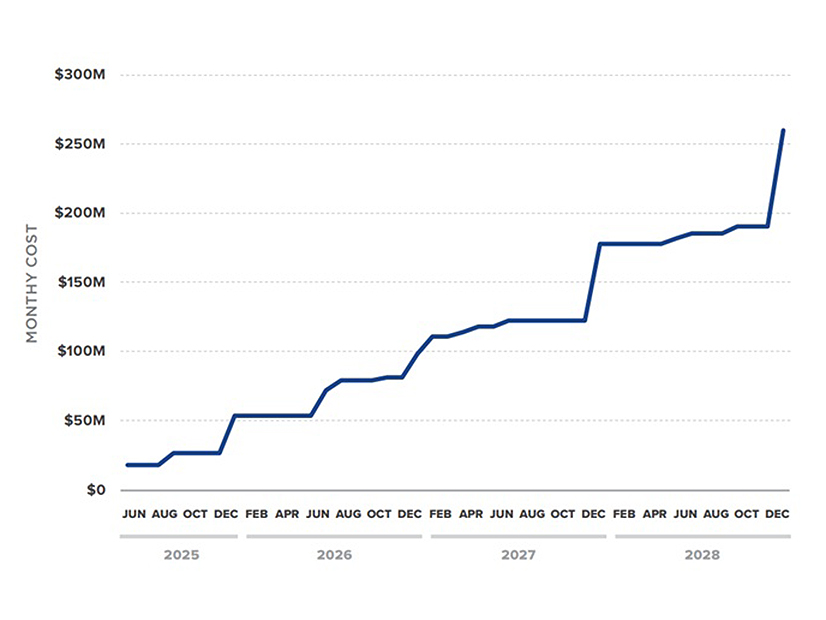An ongoing squabble over a slow-moving EV charger grant program has turned a new page with the Trump administration’s release of new guidance for states to claim funding.
Transportation Secretary Sean Duffy on Aug. 11 issued interim final guidance for the National Electric Vehicle Infrastructure (NEVI) Formula Program, a Biden administration initiative that allocated $5 billion to states to help build a national network of electric vehicle chargers in hopes of reducing range anxiety and increasing EV adoption by American drivers.
None of this was a priority for President Donald Trump. The Federal Highway Administration suspended approval of state EV infrastructure deployment plans shortly after he returned to office.
The Government Accountability Office faulted the move in May and a federal judge issued a preliminary ruling against the Trump administration in late June.
Seven weeks later, Duffy’s announcement Aug. 11 had a bit of a grudging tone: “Our revised NEVI guidance slashes red tape and makes it easier for states to efficiently build out this infrastructure. While I don’t agree with subsidizing green energy, we will respect Congress’ will and make sure this program uses federal resources efficiently.”
The Sierra Club, which had joined several other environmental advocacy groups and state attorneys general in the court challenge, called the revised guidance unnecessary and wasteful: “It’s ironic that this guidance was sold as cutting red tape, yet all it has accomplished is more than half a year of needless delay. The guidance only restates requirements already in law, making clear that the real purpose of the Trump administration’s freeze was to try to stall electric vehicle momentum.”
The administration, it added, “is still illegally withholding billions Congress dedicated to EV charging.”
NEVI was created in the Infrastructure Investment and Jobs Act of 2021. Its funding authorization is little more than a rounding error in the massive financial commitments made for the clean energy transition during the tenure of President Joe Biden. Also, it was slow to take off.
Announcements by the Joint Office of Energy and Transportation tended to run in the single digits — the first NEVI-funded charging station had opened in Colorado, three had come online in western Wisconsin, and one was opened in Texas.
In its final quarterly update, on Nov. 26, 2024, the Joint Office said the number of public charging ports nationwide had doubled during Biden’s tenure to nearly 204,000 — 126 of which were at 31 NEVI-funded stations in nine states.
But 41 states had released solicitations, the update noted, and 35 of them had issued conditional awards or reached agreements for more than 3,560 fast-charging ports at more than 890 locations.
On Feb. 6, the Highway Administration suspended approvals of NEVI grants. It issued a spreadsheet showing that as of that date, $526.6 million had been obligated to 46 states, the District of Columbia and Puerto Rico, but they had spent only $44,428,296.71.
On May 7, the states filed their complaint in U.S. District Court in western Washington (2:25-cv-00848). The advocacy groups later joined as intervenor plaintiffs.
On May 14, Duffy publicly called out the states for their court challenge, noting that most had not spent even a third of the funds allocated to them.
On May 22, the GAO issued a determination that the Highway Administration was not authorized to withhold NEVI appropriations, due to provisions of the Impoundment Control Act.
On June 3, the White House Office of Management and Budget sent a directive to the Department of Transportation attacking the GAO as a partisan entity trying to undermine Trump’s reforms, asserting that GAO’s opinion was wrong on both the facts and the law, and saying that DOT need not change its approach to NEVI.
On June 24, U.S. District Judge Tana Lin partly granted the states’ motion for a preliminary injunction against the Trump administration withholding NEVI funds as the case continues.
On Aug. 11, the Sierra Club said it will continue its fight, as well, because the administration “is still illegally withholding billions Congress dedicated to EV charging.”
Other organizations were more complimentary about the interim final guidance issued on NEVI.
NATSO, a trade organization representing truck stops and travel centers, and SIGMA, representing fuel marketers and retailers, said the new guidance will help direct funds to sites best suited to deliver reliable, well-maintained charging infrastructure. “Ensuring that charging stations are owned and operated by private entities with a vested interest in the site’s success reduces the risk of stranded assets and minimizes the potential for underutilized or unreliable infrastructure,” they said.
The Zero Emission Transportation Association said 2025 is projected to the best year yet for charging infrastructure expansion, and said NEVI will help fill in gaps that remain: “The new interim final guidance provides important regulatory certainty for the companies and state departments of transportation that are implementing this program on the ground. NEVI was designed for states to distribute funding based on their specific needs. Finalizing the guidance ensures that this important work will continue.”


